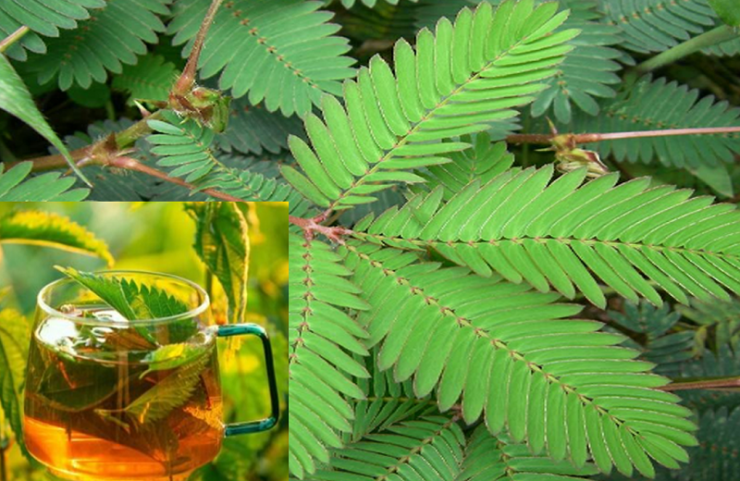
Mimosa Pudica: A Fascinating Plant with Potential Health Benefits and Traditional Uses
Mimosa pudica, commonly known as the “sensitive plant,” “touch-me-not,” or “shy plant,” is renowned for its captivating leaf movements that fold inward when touched. Beyond this unique characteristic, Mimosa pudica has a rich history of use in traditional medicine across various cultures. Different parts of the plant, including the leaves, stems, and roots, have been utilized in herbal remedies for centuries. In recent years, Mimosa pudica tea has gained attention for its potential health benefits and its continued traditional uses. This article explores how to prepare this herbal tea, its possible health benefits, and safety considerations for its use.
Potential Health Benefits of Mimosa Pudica Tea
Digestive Support
Traditional medicinal systems have long used Mimosa pudica to help alleviate digestive discomfort. It is commonly believed to assist in reducing diarrhea and calming mild gastrointestinal irritation. Certain compounds in the plant, such as tannins and flavonoids, may contribute to an astringent effect on the digestive tract, helping to tighten tissues and reduce inflammation.
Natural Health Supplements
Antimicrobial and Antiparasitic Properties
Preliminary research suggests that Mimosa pudica extracts may exhibit antimicrobial activity against certain harmful bacteria. In traditional practices, it has been used as a remedy to support the body’s defense against intestinal parasites. However, clinical research on its efficacy in this area remains limited.
Anti-Inflammatory Potential
Mimosa pudica has also been employed in folk medicine for its potential anti-inflammatory properties. It is used topically in the form of poultices for minor wounds or skin irritations, and consuming the tea is believed to help reduce mild internal inflammation. Yet, further studies are required to confirm these benefits conclusively.
Wound Healing and Skin Health
Topical applications of Mimosa pudica, such as pastes made from the leaves or roots, have been used for treating minor cuts and rashes, hinting at its possible benefits in promoting skin repair. When used as a cooled wash, the tea may be applied to alleviate certain skin irritations.
Calming and Relaxation
Some traditional sources suggest that Mimosa pudica possesses mild sedative or relaxing properties, which may help reduce occasional anxiety or promote better rest. While modern scientific evidence on this effect is not extensive, anecdotal reports indicate that it may offer gentle relaxation effects.
How to Prepare Mimosa Pudica Tea
Sourcing the Plant
It is essential to use organically grown Mimosa pudica, free from pesticides or contaminants. If you do not grow the plant at home, seek a reputable herbal supplier to ensure quality.
Drying the Plant
To prepare the plant, harvest the leaves (and possibly tender stems), then rinse them gently to remove any dirt. Air-dry the plant in a warm, shaded area with good airflow until it becomes crisp and easy to crumble.
Brewing Instructions
Ingredients: Approximately 1 teaspoon of dried Mimosa pudica leaves per 1 cup of water.
Steps:
Boil fresh, filtered water.
Pour the hot water over the dried leaves in a teapot or cup.
Cover and let it steep for 5–10 minutes.
Strain the tea and serve. You can add honey or lemon for extra flavor.
Flavor Profile
Mimosa pudica tea has a mild, slightly earthy taste, with a touch of herbal flavor. The steeping time and quantity of leaves can be adjusted according to personal taste preferences.
Precautions and Safety Considerations
Lack of Extensive Research
While Mimosa pudica has a long history of use in traditional medicine, large-scale scientific studies are limited. The safety and efficacy of Mimosa pudica for treating specific health conditions are not well-established.
Possible Side Effects
Some individuals may experience mild gastrointestinal discomfort or allergic reactions when consuming Mimosa pudica. If you notice any adverse effects such as nausea, itching, or a rash, discontinue use and consult with a healthcare professional.
Pregnancy and Breastfeeding
Due to limited research on its safety during pregnancy and breastfeeding, it is best for pregnant or nursing women to avoid Mimosa pudica tea unless advised otherwise by a qualified healthcare provider.
Medication Interactions
If you are taking prescription medications or have underlying health conditions, consult a healthcare professional before using Mimosa pudica in any form.
Quality Control
Ensure that the plant material is correctly identified and sourced from a trusted supplier, as confusion with other species or contamination can pose potential health risks.
Uses Beyond Tea
Topical Applications
Mimosa pudica has been used traditionally as a paste or poultice for minor skin issues or wounds, offering potential benefits in skin healing and soothing irritations.
Herbal Capsules
Some supplement brands offer Mimosa pudica in capsule form, often marketed for gut health, parasite cleansing, or as a general herbal supplement for wellness.
Garden and Ornamental
In addition to its medicinal uses, Mimosa pudica is grown as an ornamental plant because of its fascinating leaf movements, making it a popular choice for home gardens and indoor plant pots.
Mimosa pudica tea is an intriguing herbal infusion that continues to captivate herbalists and researchers alike. While traditional uses and preliminary studies suggest the plant may offer a variety of health benefits, conclusive scientific evidence is still developing. If you are interested in trying Mimosa pudica tea, it is essential to source the leaves responsibly, start with small amounts to assess your personal tolerance, and consult a healthcare professional for any serious or ongoing health concerns.
Like any herbal remedy, it is crucial to use Mimosa pudica with moderation and awareness, ensuring safe and informed consumption to maximize its potential benefits while minimizing any risks.